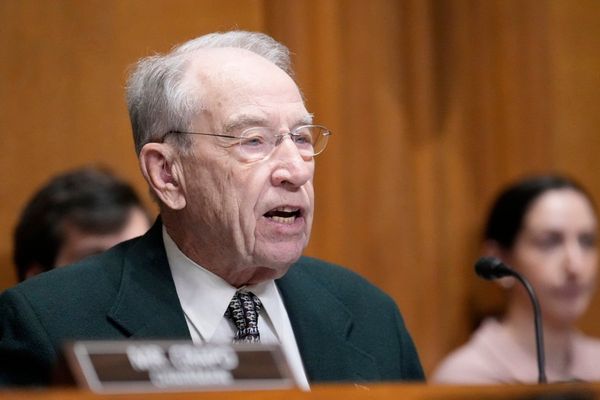
At the annual gathering of central bankers and economists in Jackson Hole, Wyoming, this year, all eyes were on U.S. Federal Reserve Chair Jerome Powell. Last year at the Jackson Hole conference, Powell had announced a new era in economic policy. This was premised on the assumption that we were in an era of low inflation. The Fed would, in the future, target average inflation, offsetting periods of low inflation below 2 percent per year with periods of more rapid price increase. Today, that world seems very remote. Inflation in the United States is running at more than 8 percent, the most rapid rate since the 1970s. Given this extraordinary turnaround, Powell needed to signal that the Fed was serious about stopping inflation.
How to make the case? Jackson Hole is a meeting of central bankers and economists. But in making his stand, Powell invoked neither economic theory nor econometrics. Instead, he summoned history.
He gave a speech laced with references to the 1970s and 1980s and paid his respects to three of his predecessors—Paul Volcker, Alan Greenspan, and Ben Bernanke. His aim was to signal that though we may no longer be in the era that Bernanke once dubbed the “great moderation,” that does not mean that we are going backward to the future. We are not heading back to the 1970s. The Fed will meet the challenge of inflation promptly and head-on. This time will be different.
In the fall of 2021, Powell still spoke of inflation as transitory. And it remains true that a large part of the price surge has been induced by supply-side issues, such as supply chain bottlenecks and surging oil prices. There is every reason to expect those pressures to ebb in the coming months. But to overemphasize this point would not help Powell make his case. So, instead, he placed emphasis on the inflationary momentum that has built up on the demand side. Investment and consumption are running ahead of capacity. Wage growth has accelerated significantly. To damp this down, the Fed is raising rates, squeezing credit, and encouraging saving. The result, as Powell acknowledged, will likely be a period of “below-trend growth” and some “softening of labor market conditions.” This is central-banker-speak for a recession.
The question in the financial markets is whether the Fed has the stomach for a prolonged fight. Will Powell and the Federal Open Market Committee be willing to allow unemployment to rise sharply if that is necessary to bring inflation down?
As Powell noted, in the bond market inflationary expectations have remained low. Bond prices are signaling that fund managers believe the Fed will succeed in stopping inflation—by tough measures, if necessary.
On the other hand, the rebound in U.S. stock markets over the summer suggested that equity investors were betting that the Fed would not be willing to impose a heavy price. Powell’s job was to dispel those doubts.
It was Volcker who made the Jackson Hole conference into a de rigueur meeting for economic policymakers from all over the world, when he became the first Fed chair to attend in 1982. As legend tells it, Volcker was lured by the prospect of fly-fishing. At the time, Volcker faced withering criticism over the devastating recession he was imposing on the U.S. economy. It was his thick-skinned resistance to criticism that established the model of the modern central banker. Forty years later, Powell invoked Volcker’s example to reemphasize that it is the main mission of central bankers to keep inflation under control—a mission he has no intention of relinquishing.
It was also in the course of the 1970s inflation that central bankers learned the crucial importance of inflation expectations. As Volcker remarked in 1979: “Inflation feeds in part on itself, so part of the job of returning to a more stable and more productive economy must be to break the grip of inflationary expectations.” Powell elaborated: “The longer the current bout of high inflation continues, the greater the chance that expectations of higher inflation will become entrenched.”
The aim is not just to bring inflation down but to drive it out of the system altogether. The standard remains Greenspan’s definition of price stability. Greenspan described it as a state in which “expected changes in the average price level are small enough and gradual enough that they do not materially enter business and household financial decisions.” At that point, what comes to prevail is so-called rational inattention: Inflation is so minor a concern, that it makes no sense to devote scarce resources to monitoring it.
As Powell ruefully observed in his speech, that is very far from our reality. Right now, “inflation has just about everyone’s attention.” In recognizing this fact, Powell achieved at least one intended effect. He delivered the message that the Fed is on the case. It will continue to raise interest rates in unusually large increments of 50 or 75 basis points until inflation is clearly under control. In reaction, U.S. equity markets recorded their worst day in months. The tech-heavy Nasdaq 100 plunged by 4 percent.
That signaled a heightened expectation of recession. But how bad is it likely to get? As Powell emphasized, the entire point of the Fed’s urgent tightening is to avoid the kind of protracted squeeze that Volcker had to apply to the U.S. economy in the 1980s. And, after all, no one actually believes that the inflationary pressures of 2022 are anywhere near as serious as those that Volcker was contending with in 1979. Back then, confidence in the dollar was collapsing; today, the dollar is riding high. There is no real prospect in 2022 of either 1970s-style runaway inflation or a 1980s hard landing.
The tone at Jackson Hole may be extremely earnest, and Powell’s words were certainly carefully chosen. But it is hard to avoid the impression that in confronting today’s price increases by way of the memory of the Great Inflation of the 1970s, we are enacting a historical pantomime in which, rather than aiming for realism, actors perform familiar roles with exaggerated gestures and the audience knows ahead of time at which points to boo and when to cheer. This, however, is a pantomime in which tens of millions of jobs and the fate of the world economy are at stake.







